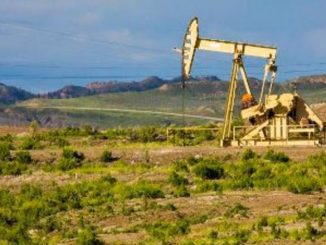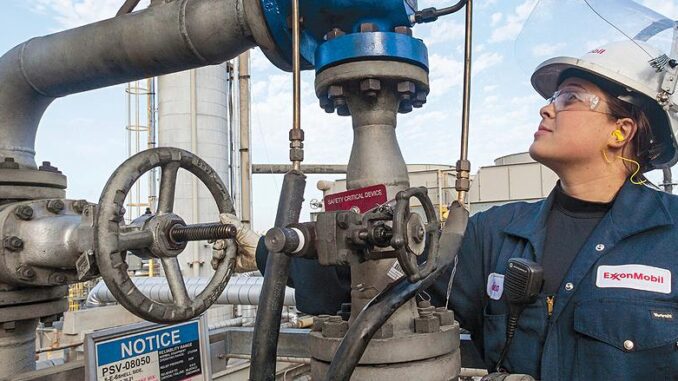
DUBAI, United Arab Emirates, December 2, 2023 (ENS) – Fifty oil and natural gas producers, including Saudi Aramco, the Abu Dhabi National Oil Co. and 28 other national oil companies, have signed an agreement to reduce their carbon emissions to net zero by 2050 and curb methane emissions to near-zero by 2030.
The COP28 Presidency and the Kingdom of Saudi Arabia today launched the landmark Oil and Gas Decarbonization Charter, a global industry charter dedicated to speeding up climate action and achieving wide impact across the oil and gas sectors.
Signatories include international oil majors BP, ExxonMobil, Shell, TotalEnergies, Russia’s LUKOIL, and Japan’s Mitsui & Co, among others, while national oil companies from Brazil to Libya to Spain to Uzbekistan joined too.
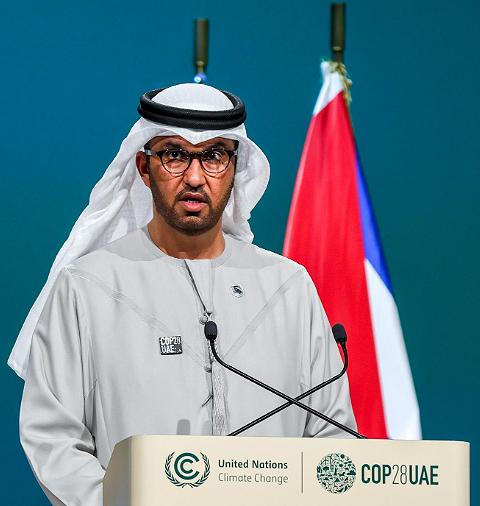
COP28 President Sultan Ahmed Al-Jaber, who also serves as CEO of the Abu Dhabi National Oil Co., and also as the UAE’s Minister of Industry & Advanced Technology, said the pledges were part of his efforts to proactively engage with oil and gas companies during the summit.
“If we want to accelerate progress across the climate agenda, we must bring everyone in to be accountable and responsible for climate action,” Dr. Al-Jaber said. “We must all focus on reducing emissions and apply a positive can-do vision to drive climate action and get everyone to take action. We need a clear action plan, and I am determined to deliver one.”
Those who signed the committed themselves to achieving zero methane emissions and ending routine flaring by 2030, and to total net-zero operations by 2050 at the latest.
The Oil and Gas Decarbonization Charter was launched by the COP28 Presidency at the ongoing meeting at Expo City Dubai formally known as the 28th Conference of the Parties to the United Nations Framework Convention for Climate Change. No wonder most people call it the UN climate summit – or simply COP28.
The United Arab Emirates, host of COP28, announced a US$30 billion commitment to an investment fund called ALTÉRRA. The privately managed fund aims to mobilize US$250 billion globally by 2030, to facilitate climate investments and support emerging markets and developing economies. The goal – to create “a fairer climate finance system,” the fund states on its website.
Don’t Wait, Accelerate
The Global Decarbonization Accelerator, or GDA, a series of landmark initiatives designed to speed up the energy transition and drastically reduce global emissions, was unveiled at COP28 by Dr. Al Jaber, who clearly takes pleasure in the involvement of other oil company executives in the effort to curb climate change, brought on by burning of their own products.

The GDA is focused on three key pillars: rapidly scaling the energy system of tomorrow; decarbonizing the energy system of today; and targeting methane, a potent greenhouse gas, and other non-CO2 greenhouse gases. It is a comprehensive plan for system wide change, addressing energy demand and supply simultaneously.
The Presidency says the creation of the GDA was informed by the thinking of key stakeholders, including international organizations, governments and policy makers, non-governmental organzations, and CEOs from every industrial sector.
“The world does not work without energy,” Dr. Al Jaber said. “Yet the world will break down if we do not fix energies we use today, mitigate their emissions at a gigaton scale, and rapidly transition to zero carbon alternatives. That is why the COP28 Presidency has launched the Global Decarbonization Accelerator.”
The GDA also includes the launch of the Industrial Transition Accelerator (ITA), which will accelerate decarbonization across key heavy-emitting sectors, and encourage policymakers, technical experts and financial backers to work with industries to unlock investment and rapidly scale the implementation and delivery of emissions-reduction projects.
Under the leadership of the COP28 Presidency, UNFCCC, and Bloomberg Philanthropies, the ITA Secretariat will be hosted by the Mission Possible Partnership.
Arsenio Dominguez, incoming Secretary General of the International Maritime Organization, commented, “At a critical moment for the future of our planet, the IMO welcomes the timely announcement of the Industrial Transition Accelerator, which aligns closely with the net zero future of global shipping as defined in IMO’s 2023 Greenhouse Gas Strategy. The maritime industry faces a confluence of challenges, opportunities, and changes ahead. The ITA can help bridge the gap by enhancing cross-sectoral cooperation and collaboration across the UN family.”
Methane Rulemaking Underway
The methane portion of the agreement involves the 50 companies setting interim targets that would reduce methane emissions to 0.2 percent of oil and natural gas production by 2030, and to end routine flaring.
Many company executives are even enthusiastic about the new emissions limits.
“bp welcomes the finalization of a federal methane rule for new, modified and – for the first time – existing sources,” said Orlando Alvarez, chairman and president, bp America. “A well-designed rule will help drive material methane emission reductions this decade and beyond. We appreciate the collaborative way EPA, NGOs and industry worked together on this rulemaking. In the spirit of COP28, input from a broad range of stakeholders makes for more durable and effective policies. We congratulate the Administration on this important milestone and look forward to working together on the next phases of implementation.”
One notable company signing the methane pledge today is Zhenhua Oil, the oil exploration and production subsidiary of Chinese defense contractor Norinco. As of 2017, the company maintained oil and gas exploration and production operations in 11 countries, including Egypt, Myanmar, Kazakhstan and Iraq.
In October Wang Yuetao, chairman of ZhenHua Oil, told the Sustainable Innovation Forum COP28 that his company, “…is committed to promoting green development through technological innovation.”

“In upstream projects such as those in Iraq and Kazakhstan, associated gases produced during production are used for internal power supply in resource countries or oilfields, effectively reducing carbon dioxide emissions,” Wang said.
Adherence by the companies to their methane pledges will be scrutinized using technology and data.
The United Nations Environment Program’s International Methane Emissions Observatory, the nonprofit Environmental Defense Fund and the International Energy Agency will help monitor compliance by tracking methane emissions using satellite data, and other analytical tools.
Environmental Defense Fund President Fred Krupp said the pledge has the potential to be the most impactful climate action in over three decades. “It could lower the planet’s temperature and reduce cataclysmic storms from what we will otherwise experience in the next decade,” he said.
Thousands of gas flares at oil production sites worldwide burned some 139 billion cubic meters of gas last year, according to the World Bank. Assuming a ‘typical’ associated gas composition, a flare combustion efficiency of 98 percent and a Global Warming Potential for methane of 28, each cubic meter of associated gas flared results in about 2.6 kilograms of CO2 equivalent emissions (CO2e), resulting in over 350 million metric tonnes of CO2e emissions annually, of which around 42 million tonnes is emitted as unburned methane.
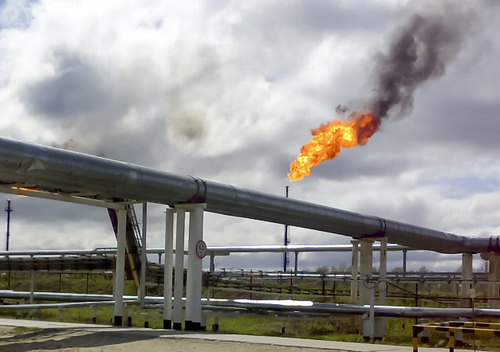
The methane emissions from inefficient flare combustion add to global warming. This is particularly so in the short to medium term as, according to the Intergovernmental Panel on Climate Change.
Methane accounts for 45 percent to 50 percent of oil and gas emissions, Massive methane leaks, known as super-emitter events, have been taking place at oil and gas fields all over the world, from the United States to Turkmenistan, the UN Environment agency, UNEP, reported last year. The releases, most of which can be traced to equipment failures, can last for weeks. One outside of a storage facility in Los Angeles in 2015 emitted almost 100,000 tonnes of methane – a potent greenhouse gas – into the atmosphere over the course of four months.
In June, researchers at Spain’s Polytechnic University of Valencia, said they uncovered the latest known super-emitter event at an oil and gas platform in the Gulf of Mexico. The installation discharged 40,000 tonnes of methane during a 17-day spell in December 2021 – equivalent to three percent of Mexico’s annual oil and gas emissions.
Researchers said the release may never have been known to the public if not for the fact that it was captured by a European Space Agency satellite.
While this methane discharge was caught, it remains challenging to trace emissions of methane, which is colorless, odorless and responsible for more than 25 percent of all global warming today. Due to its physical structure, methane traps more heat in the atmosphere per molecule than CO2 making it 80 times more harmful than CO2 during the 20 years after it is emitted.
The United States and China will separately continue their conversation on methane reduction, a spokesman for the COP28 presidency said.
U.S. EPA Issues Final Methane Rule
But those ongoing talks did not prevent the Biden Administration from acting today. The Biden Environmental Protection Agency (EPA) on Saturday issued a final rule aimed at reducing methane emissions.
EPA Administrator Michael Regan and White House climate adviser Ali Zaidi announced the EPA’s final methane rule at COP28.
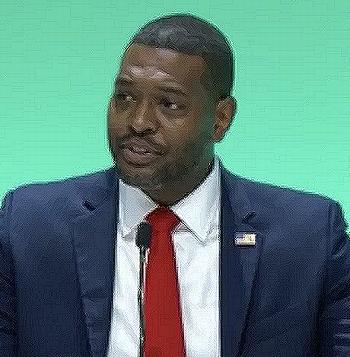
The rule will reduce methane and other harmful air pollutants generated by the oil and gas industry, promote use of cutting-edge methane detection technologies and deliver public health benefits in the form of reduced hospital visits, lost school days and deaths. Air pollution from oil and gas operations can cause cancer, harm the nervous and respiratory systems, and contribute to birth defects.
Administrator Regan told the COP28 delegates, “On day one, President Biden restored America’s critical role as the global leader in confronting climate change, and today we’ve backed up that commitment with strong action, significantly slashing methane emissions and other air pollutants that endanger communities. We’ve crafted these technology standards to advance American innovation and account for the industry’s leadership in accelerating methane technology. Thanks to robust public feedback and engagement with states, Tribes, companies, and organizations, we are finalizing this historic action to reduce climate pollution, protecting people and the planet.”
“Under President Biden and Vice President Harris’s leadership, the U.S is turbocharging the speed and scale of climate action, at home and abroad, including our collective efforts to tackle super-pollutants like methane,” said Assistant to President Biden and U.S National Climate Advisor Ali Zaidi.
“From mobilizing billions in investment to plug orphaned wells, patch leaky pipes, and reclaim abandoned mines to setting strong standards that will cut pollution from the oil and gas sector, the Biden-Harris Administration is putting the full throw-weight of the federal government into slashing harmful methane pollution. Over just the last year, the Administration has taken over 100 actions to implement the U.S. Methane Emissions Reduction Action Plan,” Zaidi said, “steps that cut pollution, promote public health, create thousands of jobs, and lower energy costs for Americans.”
The U.S. EPA’s final methane rule includes a suite of pollution reduction standards that address the largest sources of methane and other harmful pollutants at oil and gas facilities, including methane that leaks or is vented from equipment and processes.
The final rule includes a Super Emitter Program that will utilize third-party expertise in remote sensing to detect large methane releases or leaks known as “super emitters,” which recent studies have indicated account for almost half of methane emissions from the oil and gas sector.
Last July, the UN Environment agency, UNEP, revealed that massive methane leaks, called super-emitter events, have been occurring at oil and gas fields from the United States to Turkmenistan. The releases, most linked with equipment failures, can last for weeks. A 2015 leak outside a storage facility in Los Angeles disgorged almost 100,000 tonnes of methane into the atmosphere over the course of four months.
Researchers at Spain’s Polytechnic University of Valencia uncovered the latest known super-emitter event at an oil and gas platform in the Gulf of Mexico. The installation discharged 40,000 tonnes of methane during a 17-day spell in December 2021 – equivalent to three percent of Mexico’s annual oil and gas emissions. Researchers said the release may never have been known to the public if not for the fact that it was captured by a European Space Agency satellite.
While that discharge was caught on camera, it remains challenging to trace emissions of methane, which is colorless, odorless and responsible for more than 25 percent of the global warming the Earth is experiencing today. Due to its structure, methane traps more heat in the atmosphere per molecule than carbon dioxide (CO2) making it 80 times more harmful than carbon dioxide, CO2, during the 20 years after it is released into the atmosphere.
Click here to read the U.S. EPA’s final methane rule and view the fact sheet.
COP28 UAE is taking place at Expo City Dubai from November 30 through December 12. The conference is expected to count over 70,000 participants, including heads of state, government officials, international industry leaders, private sector representatives, academics, experts, youth, and non-state actors.
As mandated by the Paris Climate Agreement, COP28 UAE is delivering the first Global Stocktake – a comprehensive evaluation of progress against climate goals.
The COP28 Presidency says the UAE is “leading a process for all parties to agree upon a clear roadmap to accelerate progress through a pragmatic global energy transition and a “leave no one behind” approach to inclusive climate action.”
Featured image: An oil worker with ExxonMobil, undated. (Photo courtesy ExxonMobil)
© 2023, Environment News Service. All rights reserved. Content may be quoted only with proper attribution and a direct link to the original article. Full reproduction is prohibited.

